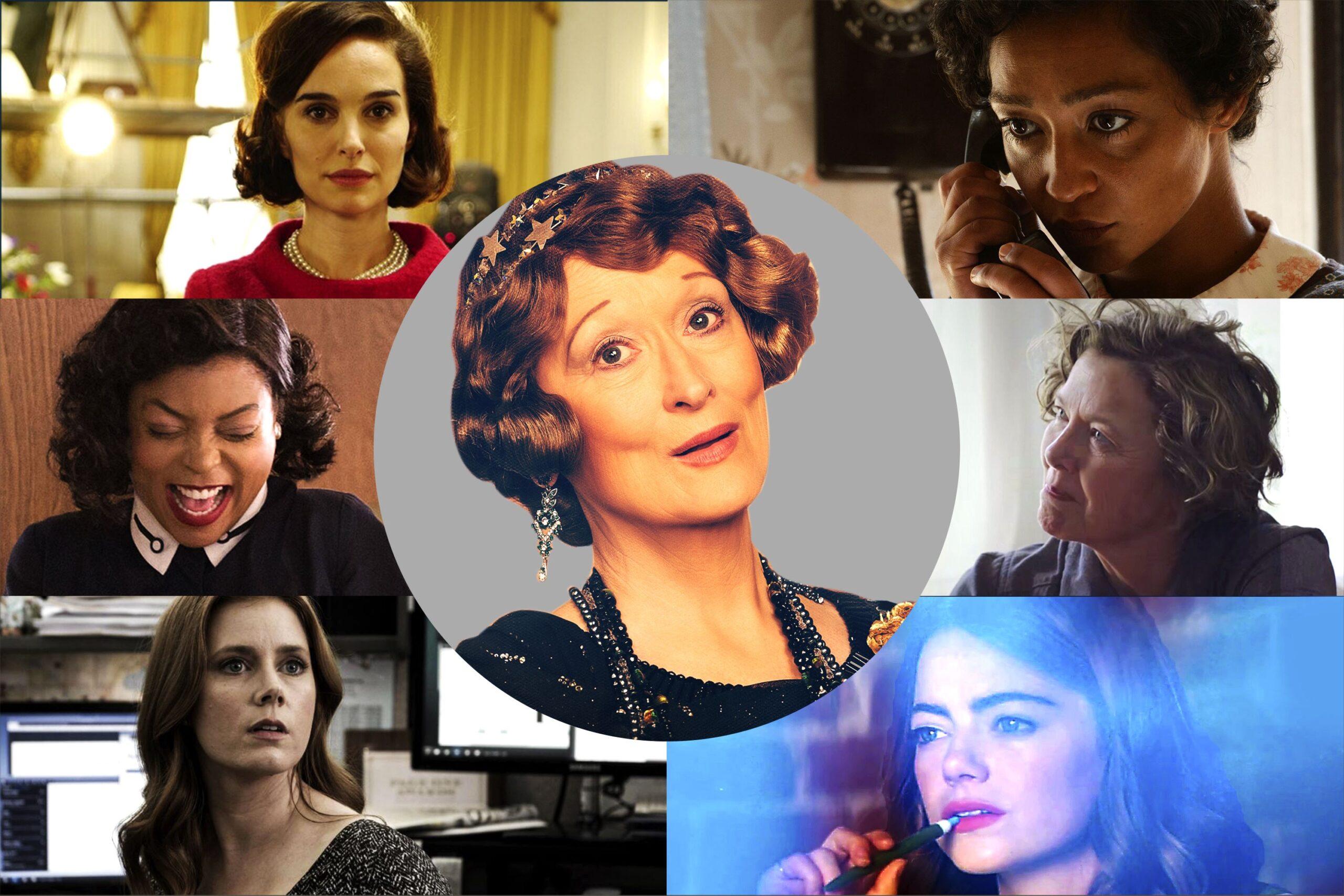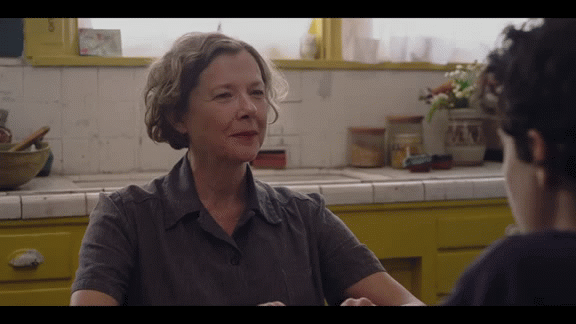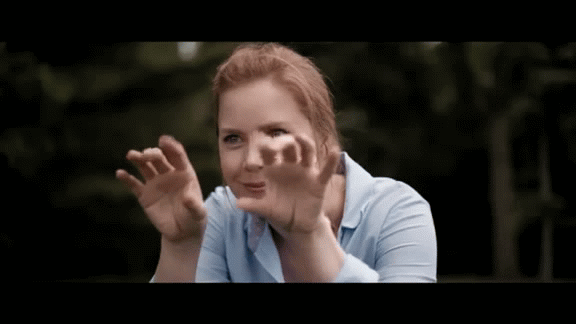
Looking for math in the Oscars is like seeking truth in politics — in theory, one needs the other to make sense, but the concepts mostly work against each other in order to survive.
Last week marked what many consider the first “official” week in the season that culminates in the Academy Awards next February, with plaudits handed out at the Gotham Awards, by the New York Film Critics Circle and the National Board of Review, as well as the announcement of nominees for the Critics’ Choice Awards, joining the pre-Thanksgiving group nominated for Independent Spirit Awards. Sunday, the Los Angeles Film Critics Association passed out its accolades. We have nominees and winners. There’s some math to work with now.
It should be noted that these are imaginary prizes voted on and given by hardworking people who want you to know what they like. I like people like this, and I like the business of awards, despite knowing better. I especially like it because it organizes and problematizes something that needn’t be — art — with campaigns for approval, the accumulation of admiration, and a ceremony to honor the tally. It’s a fancy joke with a serious punch line. But the Oscars is not like elections and it’s not like sports — it’s far more savage an exercise, unforgiving and often illogical. Outcomes are sometimes cruel in a unique way — they are frivolously exhausting — and the loss is writ large across the loser’s face in real time. History is often unkind to its winners, too (*Crash joke here*), and the reasons certain people receive certain awards are typically more dubious than any other managed American group project — I feel comfortable saying that even after the events of November 2016. Both for this reason and in spite of it, the Oscars is a national pageant, a signpost for an arts community, and a waystation for media businesses. Eighty-nine Oscars races later, that’s truly amazing for a bunch of statues whose ownership is decided upon by just 6,000 people.

This year, as with all years, there is a narrative settling into place. Moonlight was awarded every Gotham for which it was nominated, including Best Feature, and a special prize for the ensemble cast. Damien Chazelle’s forthcoming musical La La Land won Best Picture from the NYFCC, but Moonlight’s Barry Jenkins was named Best Director, the same honor he was bestowed by the NBR and the LAFCA. Moonlight, a small film with no stars, is a surprise hit with nearly $10 million in box office, and one of the year’s most affecting and affirming stories. It’s easy to get behind, and critics have done so feverishly. By the standards of most prognosticators, Moonlight, La La Land, and Manchester by the Sea are the front-runners in the Best Picture race — three small movies each representing reductive Oscar race narratives, from post-election identity to Hollywood’s self-love to the power of gritty human drama. Manchester and Moonlight will likely be contenders in virtually every category, from Best Original Screenplay to Best Supporting Actor. But neither has a Best Actress candidate, a race that exists outside of the larger narrative of award season. This is one of the reasons it’s the year’s most interesting category. There are others.
Best Actress winners — like their Best Actor counterparts — can be divvied into three distinct categories: Overdue, Ingenue, and It’s Time. Look at the winners in 2007, 2008, and 2009–61-year-old Helen Mirren for The Queen, then-unknown 32-year-old Marion Cotillard for La Vie en Rose, and 33-year-old Kate Winslet for The Reader. All three women have given performances more acclaimed, more popular, and more deserving before or since. But the Oscars work not with absolute truths but within relative human frailty. Campaigns work and narratives do, too. Take a Best Actor example, and its ripple effect: We can still hear the sighs over Al Pacino’s “Overdue” Best Actor win for his hoo-ah! performance in Scent of a Woman in 1993, which meant a loss for Denzel Washington for Malcolm X, who was later given the award for Training Day nine years later, at the expense of Will Smith in Ali, who will likely win an Oscar in the next 10 years at someone else’s expense. (I predict a 2025 Ryan Gosling smirking at the snub.) Which means: This is a not-so-vicious cycle that often prizes “Wait your turn” and “Wow, what a breakthrough!” over any other factor. Six thousand strangers pick up a piece of paper and a pen, mark “This one!” and history rolls forward.
Now let’s consider this year’s class of Best Actresses. By most estimates, this is the field as we know it:
- Amy Adams, 42, Arrival (Five nominations, zero wins)
- Annette Bening, 58, 20th Century Women (Four nominations, zero wins)
- Taraji P. Henson, 46, Hidden Figures (One nomination, zero wins)
- Isabelle Huppert, 63, Elle (Zero nominations)
- Ruth Negga, 34, Loving (Zero nominations)
- Natalie Portman, 35, Jackie (Two nominations, one win)
- Emma Stone, 28, La La Land (One nomination, zero wins)
- Meryl Streep, 67, Florence Foster Jenkins (19 nominations, three wins)
That is what you might call a stacked deck. Not simply because 32 previous nominations would be among the most decorated collection for five women, but because each contender fits into at least one narrative rubric, and sometimes more than that. Then there’s Huppert, the French screen legend who has a 45-year résumé and has been acclaimed for her performance in the complex French drama/black comedy Elle, about a woman who forms a relationship with a man who has raped her. Vulture’s Jada Yuan wrote perceptively last week about the Academy’s love for French actresses at particular stages of their career — shortly thereafter, the LAFCA handed Huppert the honor, fit with a button campaign. In a New York Times review last week of another Huppert vehicle, Things to Come, A.O. Scott asked, “Great actress or world’s greatest actress?” How does a person worthy of that question not have an Academy Award nomination to her credit? The game is cold. Huppert often takes on challenging parts — Elle is no different. And no manner of critics’ awards will ensure a shot. Huppert is both Overdue and It’s Time. But she is currently running 22–1 odds according to Gold Derby, which likely knows the French-language Elle will be the least-seen of the Best Actress contenders’ films. If they don’t see it, they won’t seal it.
And running behind Huppert? Only the most lauded actress of the past century. Meryl Streep is Meryl Streep — writing about her skill as a performer has been obscured by writing about how obvious it would be if she were nominated. The Streep Narrative has no precedent. She is Alabama Football. At 67 years old, she would be the oldest Best Actress winner since Jessica Tandy in 1990, and it’s unlikely that her (quite funny) bird-yodeling role as Florence Foster Jenkins will secure her a fourth statue. But bet against her at your peril, Streep will eat you up. She’s still got a Music of the Heart nomination stuck in her teeth. (Show me another actor who can credibly claim “violin immersion” for a role.) The rules don’t apply to her.

In most any other year, Bening would be the beneficiary of a straightforward Overdue story line, obviating this column. Bening stars as a searching single mother in late-’70s Santa Barbara in Mike Mills’s 20th Century Women, and she is plainly incredible. Using her eyes like razor blades, she cuts through phoniness and doubt with a look, and yet balances it with an empathic openness to the possibility of life. Hell, she’s moved by a fading President Jimmy Carter in one the movie’s best scenes. She should be a lock for this award. She isn’t close. Bening was surprisingly passed over in 2011’s The Kids Are All Right in favor of Portman, who won for Black Swan. (I’d have gone for Michelle Williams in Blue Valentine, but life ain’t sweet.)
Now, Portman is back to haunt Bening again with Pablo Larraín’s Jackie. “You can sniff Portman’s Oscar reel from a nautical mile out,” my colleague K. Austin Collins wrote last week. He’s right, this is the “I Want It All” of performances — real-life character, practiced accent, costume changes galore, hair mountain, history-bound tragedy, emotional modulation, crosscutting through time, a drunk scene, a solo traipse through a walk-in closet, a ruinous confession to a priest played by John Hurt, the birth of a myth, all set to a Broadway chestnut and the best film score of the year. Jackie is a polarizing movie — one part art film, one part ahistorical drama. I think I loved it, but when a colleague recently said to me, “Natalie Portman is a tiny, perfect-looking thing and therefore everyone thinks she’s an amazing actress,” I felt a slight chill. Portman does look perfect in the movie, framed by Larraín, head on, as if he were Chuck Close. The likelihood of a second win in seven years for Portman seems far-fetched. But Oscar voters love a biopic, and the sweep of American history — particularly the keen way the movie draws out what it means to manage the media and construct a brand — may have a resonance that is inescapable.

There is a feeling this year that the Academy may favor a diverse and progressive slate of movies — ones with values the American electorate turned their back on. That notion — the postelection hangover in Hollywood — is said to be as important a factor as any. This would partly explain why Moonlight — which elegantly tracks the life of a gay black man in three distinct stages — is garnering more awards traction than the gray, dour, and potentially controversy-larded Manchester.
That could mean a lot for Ruth Negga, our resident Ingenue, or Taraji P. Henson, an outlier in the three categories. Negga, a mesmerizing Ethiopian-Irish actress who grabbed my attention as Tulip O’Hare in this summer’s Preacher, plays Mildred Loving in Jeff Nichols’s story about the real couple who took their case for interracial marriage to the Supreme Court. Negga is the only real unknown in the pack and her performance is not flashy — she is firm, open, and propulsive to the story, a counterweight to her screen partner, Joel Edgerton, who utters somewhere around 100 words in the 123-minute runtime. But there are no meltdowns or mad-eyed monologues for Negga. Loving is a purposely controlled movie that works hard to stay true to its story. It’s noble. Unsentimental, but a little fusty. A little dry, too. Well-meaning in a way that defies distaste. And unfunny, despite featuring a distracting turn from Nick Kroll. All that means Negga, running a surprising 6–1 ahead of Bening for a win, is not likely to get one.
Empire star Henson is an even longer shot, though few have seen Hidden Figures, another ’60s civil rights story, this one about the African American women who were instrumental to NASA’s literal rise. Hidden Figures has drawn comparisons to The Help, a crowd-pleasing period piece with a comic touch. That movie, of which I am not at all a fan, reeled in four nominations. Hidden Figures, along with Martin Scorsese’s largely unseen Silence, are the drones of this race, both capable of sudden and unforeseen disruption. Either way, both parts are important to the story we’re told in the coming months. If recognized, Henson and Negga’s roles may be used as a wedge, one year removed from the #OscarsSoWhite controversy, in the same way that Denzel Washington’s adaptation of August Wilson’s play Fences will be. (Notably, Fences costar Viola Davis, who pundits are treating like a God-given lock for Best Supporting Actress, cannily submitted for the supporting category, rather than this thunderdome of a Best Actress group.)
That leaves us with two possible nominees, the front-runner and the wild card. The leader on the board is Emma Stone, who was nominated in 2015 for her essential and iconic “You mock Twitter!” meme spiel in Birdman. Emma Stone might be the most likable person in America. When you finish this column, go next door and ask your neighbor what they think of Stone. They will likely hand you a dozen fresh-cut red roses. Her turn in La La Land has none of, say, Portman’s true-story gravitas in Jackie, but it does have adept singing, dancing, and romancing. Chazelle’s movie makes people feel good. Manohla Dargis’s rapturous ode last month says as much. It is a salve, a distraction, an escape — whatever you want to call that feeling that so many people want to emerge from the throes of 2016, it is that. That may be enough. Stone, not yet 30, is both Ingenue and It’s Time — she’s had a sturdy career and possesses a specific kind of relatable fame (*deathly coughing* Jennifer Lawrence *discharging a lung*) that Oscar rewards. She has range, moving among comedy, blockbuster, drama, and now musical with the kind of ease that people notice. She’s a charming interview and an old-school Hollywood ambassador. Stone is the one the world has been waiting for, according to one version of the world. But she is not the only one.

There, in an abandoned field in Montana, we can see a shape in the distance. It looks like it’s hovering. It’s a woman. Will anyone notice her there, luminous in the sky? Last week Vulture’s Kyle Buchanan wrote, “Every headline helps an on-the-bubble bid, and for Amy Adams, an NBR win for Best Actress and an attention-getting tout from Cate Blanchett at the Gothams will add some heft to her contending Arrival performance.” Everyone forgot — it’s Adams Season. Since exiting a spacecraft in 2005 and appearing as a try-hard Southern pregnant wife in the small indie Junebug, Amy Adams has been a persistent quantity at the Oscars. If she were nominated this year, we’re talking six in 12 years, on a nearly metronomic pace. In 2014, she received her first Best Actress nomination for American Hustle, after four supporting nods. And while it may not seem like it, Adams is actually the box office champ (with $2.09 billion in domestic gross) of all potential nominees, narrowly edging the Amazing Spider-Man–starring Stone ($1.4 billion), Meryl Streep and her decades of work ($2.04 billion), and Natalie “I am the only woman with Star Wars and Marvel credits” Portman ($2.06 billion). Adams is a secretly big star who is the lead in the movie that will likely be the box office leader among awards contenders. (Arrival has already earned $73 million in three weeks of release.)
All of this is math, and math is the Oscars’ enemy. But in a year such as this — when the bulk of possible winners will all be from small-house production companies or boutique studio releases — visibility could mean everything. Best Actress isn’t specifically a bastion of box office success, but there are anecdotal examples, particularly when a movie star in a hit also captures critical approval. Portman in Black Swan, Sandra Bullock in The Blind Side, Reese Witherspoon in Walk the Line, and Jennifer Lawrence in Silver Linings Playbook were all first-time winners in financially successful, acclaimed movies. (Here is where I point to Arrival’s 93 percent score at Rotten Tomatoes.) Does that guarantee an Adams surge in the next 11 weeks? Not exactly, because there are so many competing notions of success, and a field that is as diverse as it is intriguing. But it won’t hurt to have a major studio bankrolling an awards push in a major category — Arrival will be one of just a few nonanimated movies getting such a campaign — as it eyes a push in the new year to bolster its receipts. Adams stands to benefit the most.
Who has been left out of this already bunched lineup? Maybe a Jennifer Lawrence run for Passengers. (I doubt it.) Or Kate Beckinsale in Love & Friendship. (I’d love it, but no.) Perhaps Krisha Fairchild, the star of Sundance sensation Krisha (let’s be reasonable), or, if the Academy is feeling sleazy, a look for Adams in Tom Ford’s Nocturnal Animals. (I can dream.) The Witch’s Anya-Taylor Joy is the worthiest candidate I haven’t seen mentioned seriously. (Hail Satan.) Maybe Felicity Jones, who watched Eddie Redmayne (her screen partner in 2014’s The Theory of Everything) walk away with a trophy, could get a notice for the gritty spy work she’ll do in Rogue One: A Star Wars Story. But “Star Wars” and “acting awards” are rarely uttered in the same sentence.
The likelihood of a shocking party crasher seems minuscule — the Academy has been gifted a robust offering in a category that is often met with anxiety or disinterest. It isn’t just that there have been more strong roles for women in movies this year. It’s that those strong roles dovetail with the industry’s vision of a successful awards story. Best Actress is a can’t-lose proposition right now — put any contender onstage at the Dolby Theatre on February 26, and there’s a story to tell. The Oscars doesn’t care for math, and it also doesn’t care for justice. It just wants to put on a good show.

